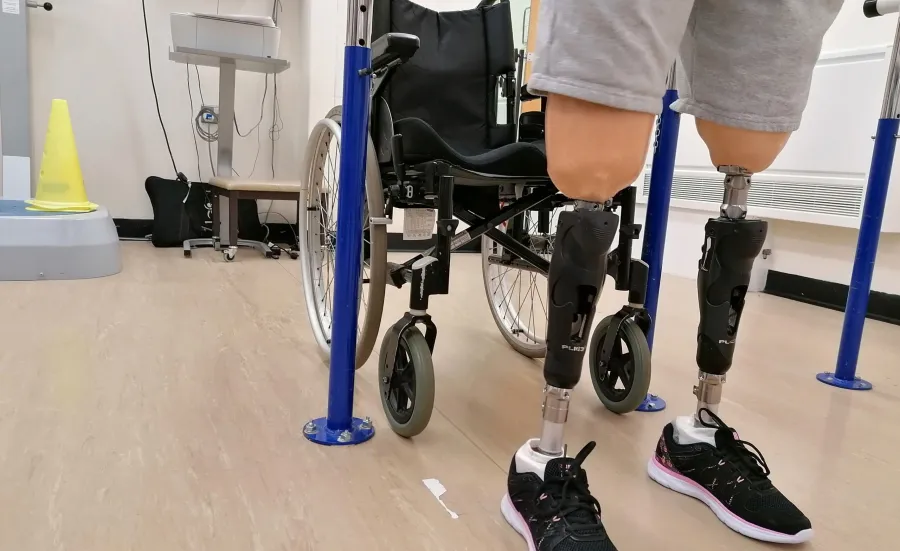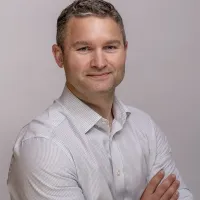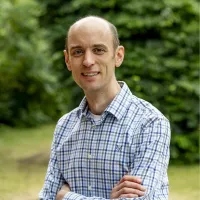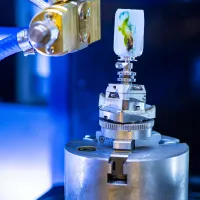As a biomechanical engineer specialising in designing limbs,, Alex Dickinson admits his profession can make mistakes. Often excited by the potential of a fashionable new technology, engineers rush to be the first to create a different type of prosthetic.
“Sometimes it’s only at the end of the development process, when they present a device to the person missing a limb, that they realise they misunderstood or assumed their needs,” he says.
Early in his career, Professor Alex, Professor of Biomechanical Engineering at the University of Southampton, saw that the voice of the most important stakeholders in the prosthetic design process – those who would be wearing and using the limbs – were really easily overlooked.
It’s a problem he has considered with colleague Dr Maggie Donovan-Hall, Associate Professor in Psychology, after their chance meeting at an academic conference. Together with other experts in health technology innovation (Professor Cheryl Metcalf), physiotherapy (Chantel Ostler) and bioengineering (Professor Pete Worsley) from the University, they established the People Powered Prosthetics team, which is revolutionising the way cutting-edge technology meets the needs of those living with limb loss. And that doesn’t always mean being first to realise the latest innovation. The team were awarded seed funding from the University's Institute for Life Sciences which champions interdisciplinary researchers working together to tackle society’s challenges in the Life Sciences.
It’s really about understanding the user’s perspective when you’re developing the technology that helps to design a prosthetic. It’s about really understanding how it’s going to impact on all aspects of their life
Dr Maggie Donovan-Hall
As a health psychologist who specialises in rehabilitation for people who have lost a limb, Maggie says what makes a prosthetic limb work well for individuals with limb loss is not whether it includes the latest technology but what it enables them to do – whether that’s being able to bend to pray, walk to the bus stop, attend a social club or feel strong and capable enough to offer to make a cup of tea for a friend or partner.
So, instead of only designing prosthetics, the team balances technology and human-centred research methods to understand individual patients’ particular needs. “Understanding how we feel about a prosthetic is really important. How it makes us feel will impact on our life as much as how well it actually works,” she explains.
With that in mind, People Powered Prosthetics was set up to deliver research that aims to empower both people using prosthetic limbs and the clinicians who design and fit them across the world. The team focuses on two main areas. First, it is looking at which tools would help support a better design for the most crucial part for the success of a new limb – the point where it joins the human body. “The comfort of the prosthetic limb’s fit matters the most,” Alex adds. Second, the team is investigating how people use their prosthetic limbs in reality and what a meaningful outcome is for them.
We look for digital technologies that are low cost but effective, and which can slot into their existing practice. We test those technologies in comparison to what they’re currently using, and come to a decision on whether it is going to provide a benefit to their everyday work
Professor Alex, working in Cambodia
Here in the UK, the team works with Radii Devices Ltd – a University of Southampton spin-out company led by Mechanical Engineering BEng and PhD graduate Josh Steer – which is using data science to help clinicians predict the best prosthetic treatments for their patients, based on limb-user interface designs that have helped to improve quality of life for similar patients. It is helping to take out some of the estimation and iteration when designing the perfect replacement limb.
Elsewhere in the world, the team is bringing its fresh approach to clinicians who may not have the budget to use the latest kit when supporting their clients. In Cambodia, the team partnered with charity Exceed Worldwide. The team had initially hoped to bring the benefits of computer-aided design and manufacturing to the country. However, leading-edge technology can bring its own problems, particularly if repairing and maintaining it is not possible on a small budget. “Maggie and Exceed challenged our engineering ideas but getting challenged and going back to the drawing board means we’re much more likely to deliver something useful,” says Alex.
Alex explains: “Maggie said, ‘If the new manufacturing equipment breaks, how will they service it, or replace it?’ If it’s a sustainable result, it needs to be locally replaceable with their own funds. If that’s not possible, then we could damage the existing skills currently used in their prosthetics centres – reputed to be some of the best in the world, due to Exceed’s clinician training. By imposing technologies, we could unintentionally make things worse for their patients.”
So the team pivoted. They used activity monitoring technologies to understand how Cambodian people use prosthetic limbs to do heavy work such as farming as well as walking thousands of steps per day, how comfortable the limbs were to use plus people’s engagement in society.
Working with demographer Professor Amos Channon, they uncovered trends in Exceed’s clinical data that show how Cambodia is dealing with loss of limbs due not only to landmines left behind by conflict but also, more commonly now, for reasons such as road accidents and diabetes.
Yet for the team, the most significant result of the work is a better way of working with clinicians and patients. Led by the Exceed Research Network, they drew up a white paper on the ethics of trialing prosthetics technologies that are sensitive to local needs to which researchers worldwide can refer to improve patient care.








